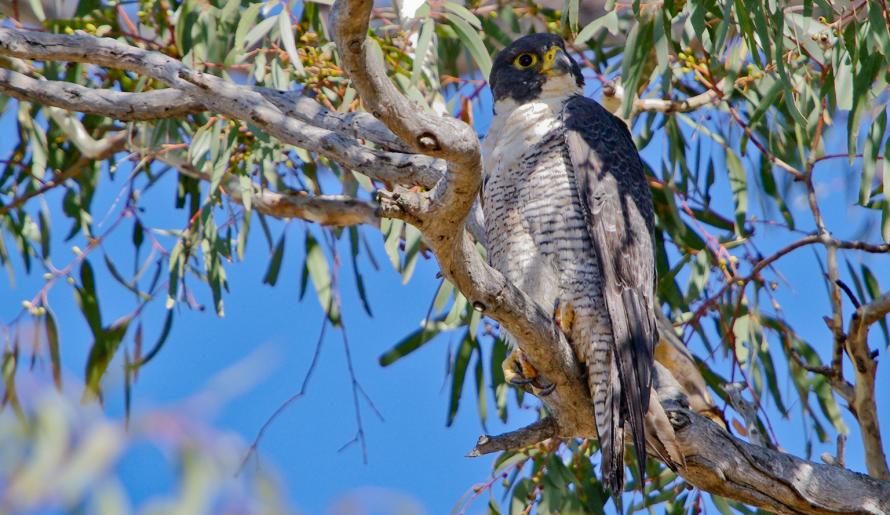
Peregrine Falcon
Falco peregrinus
| Details | |
|---|---|
| Type | Bird |
| Group | |
| Biology | Breeding season: August to December. Clutch size two to four. They mate for life and maintain a home range of about 20-30 km square throughout the year. Pairs may hunt co-operatively, with one member, usually the male, scattering a flock of birds while the other swoops down to attack a particular individual. This co-operative behaviour is most often observed during the breeding season. Rather than building a nest, it lays its eggs in recesses of cliff faces, tree hollows or in the large abandoned nests of other birds. The female incubates the eggs, and the male hunts. |
| Distinctive Markings | Lacks a full black hood. Different flight silhouette to the Australian Hobby, with a curved trailing wing-edge. |
| Taxonomy | |
|---|---|
| Phylum | Chordata |
| Class | Aves |
| Order | Falconiformes |
| Family | Falconidae |
| Genus | Falco |
| Species | peregrinus |
The Peregrine Falcon is one of the fastest birds of prey, swooping down at speeds of up to 300 km/h.
| Interesting Facts | |
|---|---|
| Diet | Carnivore. Feeds on small to medium-sized birds, rabbits and other mammals. It swoops down on its prey from above, catching or stunning it with its powerfully hooked talons, before grasping and carrying it off to a perch to pluck and eat it. |
| Habitat | Found in open grasslands, wooded areas and tall structures in urban areas. |
| Native Status | Native to Australia |